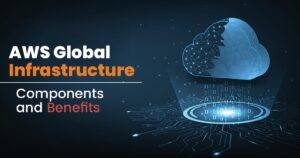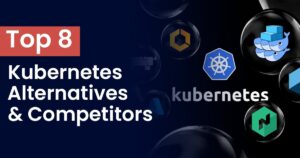
How to prepare for the PL-900 exam
Introduction The Microsoft Power Platform Fundamentals Certification lets you grasp the core concepts and fundamentals required to start on Power Platform. To achieve this certification,
Unlock the Power of FortiGate Mastery with Our Latest Release Fortinet Certified Associate – FortiGate Operator Course. Enroll Now!

Introduction The Microsoft Power Platform Fundamentals Certification lets you grasp the core concepts and fundamentals required to start on Power Platform. To achieve this certification,

Introduction The demand for scalable, reliable, and secure cloud services has never been higher in today’s digital landscape. AWS Global Infrastructure is a beacon of

Introduction The way we manage container orchestration has been entirely transformed by Kubernetes, which has made application deployment, scaling, and management much more accessible. It’s
Table of Contents
Enterprises can use public cloud computing platforms to supplement their private data centers with global servers that extend their architecture to any location and allow them to scale computational resources up and down as needed. These hybrid public-private clouds provide enterprise computing applications with unprecedented flexibility, value, and security.
However, AI systems that run in real-time worldwide can necessitate a lot of local processing power, which is often required in remote regions too far from centralized cloud servers. Due to low latency or data-residency constraints, some workloads must remain on-premises or in specified locations.
Businesses use edge computing to deploy AI applications, which refers to processing near the point where data is generated. Edge computing handles and saves data locally on an edge device instead of cloud processing in a remote, centralized data reserve. Data is handled and stored locally in an edge device using edge computing. The device may function as a standalone network node rather than relying on an internet connection.
Let’s look at this article to learn more about edge computing, including what it is, how it works, the cloud’s impact, edge use cases, benefits, and current market trends.
If you want to get started in the field of Cloud Computing, Explore our Cloud Computing Courses now!
Edge computing is a networking paradigm that focuses on bringing processing as near as possible to the data source to reduce latency and bandwidth consumption. Edge computing involves moving certain processes from the cloud to local locations, such as a user’s PC, an IoT device, or an edge server. The long-distance transmission between a client and a server is lowered by bringing processing to the network’s edge.
In the case of Internet devices, the network edge is when the device, or the local network hosting the device, communicates with the Internet. The term “edge” is somewhat ambiguous; for example, a user’s computer or the processor inside an IoT camera can be called the network edge, but so can the user’s router, ISP, or local edge server. The critical point is that, unlike origin servers and cloud servers, which can be located far away from the devices they connect with, the network edge is physically proximate to the device.

In traditional enterprise computing, data is created at a client endpoint. An example of this can be a user’s PC. That data is transported to the corporate LAN over a Wide Area Network (WAN), such as the Internet, and stored and processed by an enterprise application. The results of the job are then returned to the client’s destination. This is still a tried-and-true client-server computing architecture for most common business applications.
Traditional data center infrastructures are outpacing the number of Internet-connected devices and the volume of data generated by those devices and consumed by enterprises.
As a result, IT architects are shifting their focus away from the central data center and toward the logical edge of the system. They are relocating storage and processing resources from the data center to the point where data is generated.
Edge computing places storage and servers where the data is, requiring only a partial equipment rack to gather and analyze data locally across a distant LAN. In many cases, computing equipment is housed in shielded or hardened enclosures to protect it from temperature, humidity, and other external factors. Processing usually entails normalizing and analyzing the data stream in search of business intelligence, with only the analysis’ conclusions being sent back to the primary data center.
The original computers were enormous, heavy machines that could only be used directly or via terminals, essentially computer extensions. Computing may become considerably more widespread due to the invention of personal computers. Personal computing used to be the most extensively utilized computing model. Data was saved locally on a user’s device or, in certain cases, in an on-premise data center after applications were launched.
A relatively recent invention, cloud computing has several advantages over on-premise computing. Cloud services are gathered in a vendor-managed “cloud” that may be accessed from any device via the Internet.
By distributing computing services via the Internet, cloud computing provides faster innovation, more flexible resources, and cost savings (“the cloud”). You typically only pay for the cloud services you use, which allows you to save money, enhance the efficiency of your infrastructure, and scale your organization as it grows.
However, due to the distance between consumers and the datacenters where cloud services are hosted, cloud computing can cause delays. While maintaining the centralized characteristics of cloud computing, edge computing brings computation closer to end-users to reduce the distance that data must travel.
Analysts like Allied Market Research and Market Research Future have various disagreements over the magnitude of the edge computing market.According to FiorMarkets, the global edge computing market will reach USD 18.36 billion by 2027, with a CAGR of 26.5 percent from 2020 to 2027. Given the rapid adoption of IoT and 5G in important markets such as North America and Asia, we expect this to be underestimated.

The growing number of use cases needing low-latency processing, the relevance of big data and AI adoption, IoT and the growing number of smart devices, 5G adoption, and collaborations and acquisitions with hyper scalers, telcos, and start-ups are all driving the expansion of edge computing.
The Internet of Things is rapidly gaining popularity, resulting in a flood of data that must be processed in centralized cloud computing and storage systems. However, the cloud’s sustainability is unknown due to latency, bandwidth, and security problems; therefore, businesses are turning to edge computing solutions instead. Edge computing brings computing closer to the IoT device for data gathering and analytics. Data security and network latency are enhanced because the round trip to the data center and back is shorter. As a result, edge computing can improve IoT applications, especially real-time demand responses.
Edge computing is still in its initial stages, with participants from various ecosystems working, including network service providers, cloud and datacenter providers, traditional enterprise IT, and industrial applications and systems.
Hyperscalers already have a strong cloud presence and have begun to move towards the edge with new solutions like Azure Stack, AWS Outposts, and IoT offerings. MobiledgeX, Mutable, and SWIM are examples of start-ups. AI is also being used to create a PaaS for managing edge apps. The main competitive methods used by vendors in this industry to achieve market share and expertise have been acquisitions and alliances.
Suitable designs are required for computing jobs, and architecture appropriate for one sort of computer activity may not be appropriate for all computing tasks. Edge computing has created a practical and necessary architecture for distributed computing, allowing compute and storage resources to be placed closer to the data source, ideally in the same physical region. Distributed computing models are not new, and concepts such as remote offices, branch offices, data center colocation, and cloud computing are well-known.
Decentralization, on the other hand, is challenging because it demands a high level of monitoring and control, which is frequently overlooked when moving away from a standard centralized computing strategy. Edge computing is gaining traction as a feasible solution to the expanding network challenges of conveying the large amounts of data generated and consumed by today’s organizations.
Edge computing overcomes essential infrastructure issues, including bandwidth restrictions, excessive latency, and network congestion, but it also has several additional advantages that make it useful in other situations.
Edge computing helps reduce bandwidth usage and server resources. Bandwidth and cloud resources are limited, and they are both expensive. Smart cameras, printers, and thermostats are becoming standard in every home and workplace. More than 75 billion IoT devices are expected to use worldwide by 2025. Significant quantities of computing will have to be shifted to the edge to support all of those devices.
It is not just a technological issue; data transit over national and regional borders can increase data security, privacy, and other legal concerns. Edge computing allows data to be kept close to its source while adhering to current data sovereignty requirements, such as the GDPR, which governs how personal data is stored, processed, and exposed in the European Union. This enables raw data to be processed locally, encrypting or shielding any sensitive data before being transferred to a cloud or central data center in a foreign jurisdiction.
Edge computing offers a novel approach to data security implementation and maintenance. Although cloud providers provide IoT services and specialize in complex analysis, businesses are concerned about data security after leaving the edge and returning to the cloud or datacenter. Even if IoT device security is lacking, all data coming back to the cloud or data center can be encrypted by deploying computers at the edge. The edge deployment can be safeguarded from hackers and other malicious activities.

Things are even more efficient now due to Edge Computing. As a result, business activities are now of higher quality. Depending on the current state of affairs, Edge computing is a possible solution for data-driven activities requiring lightning-fast results and flexibility.
© 2022 All rights reserved | Privacy Policy | Terms and Conditions | Sitemap




